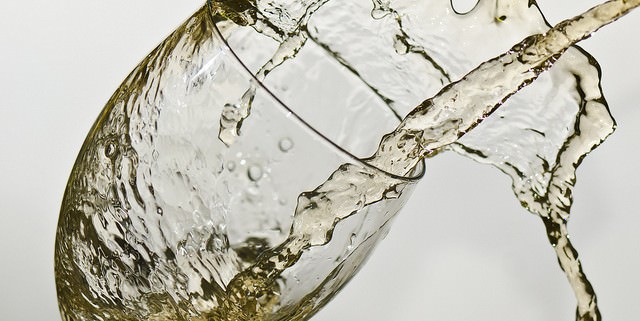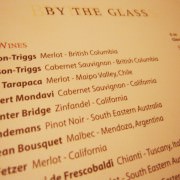Choosing Your Restaurant Wine Glass – 3 Approaches
How many wines do you serve in your restaurant? How many types of glasses do you have to serve those wines? With the recent movements toward restaurant authenticity and simplicity, it shouldn’t surprise you that there are now two outspoken sides to the wine glass debate—as well as people who agree with both sides. Which side are you on? Find out when you read this article, examining three common approaches you can take when selecting your restaurant wine glass inventory.
1. A Glass for Every Wine
This is a true wine-lover’s glass-selection method: Spend a great deal of money and storage space to house a specific glass for every varietal you serve. Though some varietals share a glass style, you’ll have to stock champagne flutes, syrah glasses, pinot noir glasses, chardonnay (and oaked chardonnay) glasses, moscato glasses, cabernet glasses, dessert wine glasses… and more. If your restaurant aspires to this ideal, you may want to consider the Riedel Veritas collection, from their restaurant series. This collection includes ten glasses that divide your wine categories into grape varietals for both the New World and the Old World. That’s really how they’re classified. Remember, in addition to your wine glasses, you’ll also have to make sure that you have glasses for your beer, your cocktails, and your water.
Though having varietal-based stemware shows that your restaurant knows wine, this is also a huge investment.
2. One-Size Fits All
To embrace the complete opposite side of this debate, your restaurant can also stock a single type of glass. Yup. One type for everything. Even cocktails.
If you choose this path, there are a few glasses you can stock. You can keep Zalto’s universal glasses on hand, use tumblers for everything, or, like Heart, a San Francisco wine bar, you can use a mason jar for everything.
Actually, mason jars aren’t that bad. I recently moved from Chicago to Albuquerque, and when I got to my new house, all of my wine glasses were broken. (I don’t miss them. They were dreadful things from Target that I bought when I was 21 and didn’t know any better.) Though my glasses were broken, I wanted to celebrate my new house with a toast… and all I had unpacked were a bunch of pint-sized, regular mouth, Ball mason jars. It turns out that they worked fine for the cabernet sauvignon I opened. Really.
The one size fits all approach saves you money and adds an interesting twist to your table setting… but it might also scare away oenophiles.
3. A Balanced Approach
To save money and offer a variety of glasses, you should consider a balanced approach. To do this, you’ll need to stock the basics: red, white, sparkling, and dessert. Remember that you’ll also have to stock a variety of bar glasses, so keep it simple and affordable.
Though a balanced wine-glass selection gives you options for serving, it also means that your restaurant’s wine glass selection will not make you stand out. Make your restaurant’s unique personality clear in other ways.
Final Words
No matter which side of the wine glass debate you personally agree with, your main concern should always be “What do my customers expect?” If your restaurant is upscale and known for having a striking wine collection and a traditional fine-dining experience, you should probably follow the “Glass for Every Wine” approach. Conversely, if your restaurant is known for its eccentricity and draws a quirkier crowd, you can experiment with mason jars.
An easy way to test the waters with your diners is to offer a great wine on special, then serve it in unconventional glassware. See how your customers react. Ask them to give you honest feedback. You’ll know what your next steps are.
Where do you stand? What have you tried in your restaurant? Take the conversation further on Twitter @UncorkdMenus
Photo licensed by Gerry Machen
- Why Your Wine Menu Is Scaring Your Guests - February 27, 2015
- How to Host a Better Restaurant Week and Get More Customers - February 23, 2015
- Choosing Your Restaurant Wine Glass – 3 Approaches - February 16, 2015




